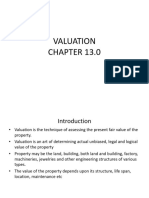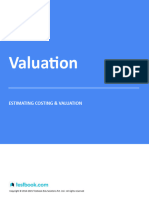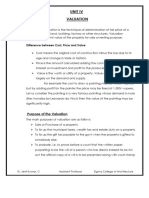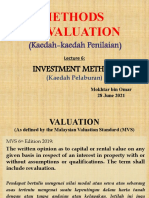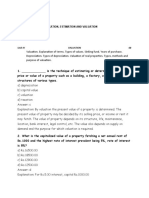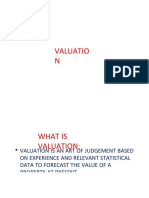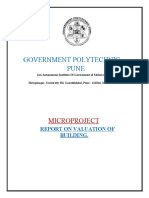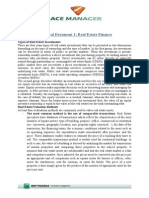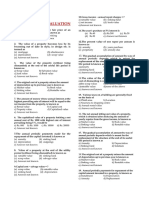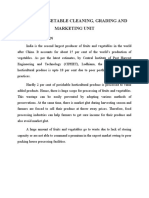0% found this document useful (0 votes)
9 views5 pagesE&C 4th Unit
The document provides definitions and explanations of key terms related to property valuation, including valuation, gross income, net income, scrap value, salvage value, book value, obsolescence, capital cost, and depreciation. It also outlines various methods for calculating depreciation and present-day costs, as well as different valuation methods and types of property ownership. Additionally, it discusses easements, deferred income, market value, and outgoings associated with maintaining a building.
Uploaded by
Ragavan MuraliCopyright
© © All Rights Reserved
We take content rights seriously. If you suspect this is your content, claim it here.
Available Formats
Download as PDF, TXT or read online on Scribd
0% found this document useful (0 votes)
9 views5 pagesE&C 4th Unit
The document provides definitions and explanations of key terms related to property valuation, including valuation, gross income, net income, scrap value, salvage value, book value, obsolescence, capital cost, and depreciation. It also outlines various methods for calculating depreciation and present-day costs, as well as different valuation methods and types of property ownership. Additionally, it discusses easements, deferred income, market value, and outgoings associated with maintaining a building.
Uploaded by
Ragavan MuraliCopyright
© © All Rights Reserved
We take content rights seriously. If you suspect this is your content, claim it here.
Available Formats
Download as PDF, TXT or read online on Scribd
/ 5





